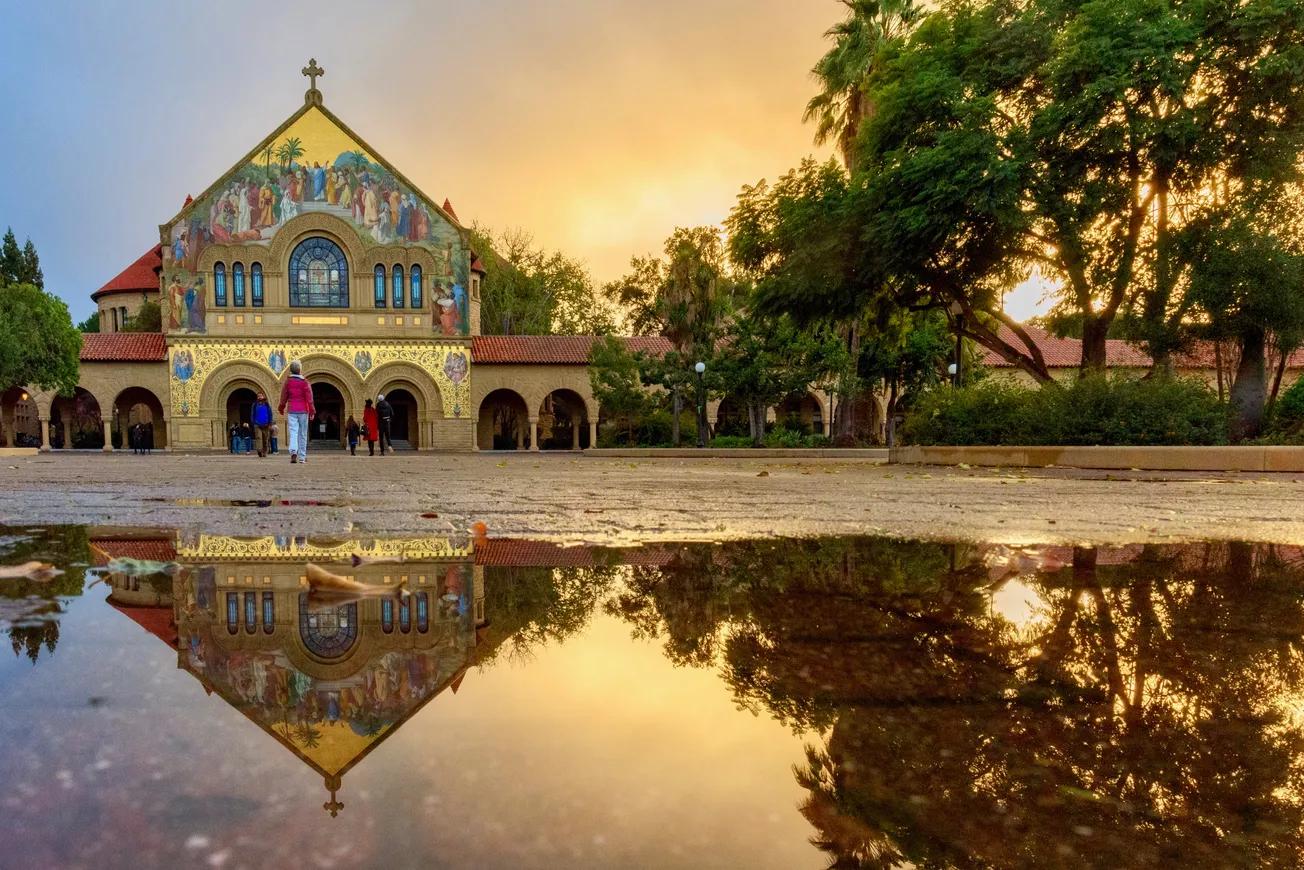Table of Contents
Stanford is known for a certain unique ethos that is dying, through a combination of not only carelessness but concerted effort on the part of University administrators.
Stanford’s reputation, which attracted me and countless others to the University, offers students a stake in the birthplace of Silicon Valley, the world’s epicenter of creativity and risk. Stanford students are less elitist than our East Coast peers, and more well-rounded: Stanford offers amenities, like Greek life and competitive athletic teams, absent in earlier iterations of the prestigious American university. The university’s unstructured curriculum expects its students to either succeed at the highest level in their own arenas, or create entirely new spheres for success. Stanford revels in nonconformity and experimentation. It was through these characteristics that Stanford gained its prestige.
I do believe that this Stanford once existed. But it is close to destruction, hastened by a caste of administrators, parasites who jump from one top university to another, who care only for raising Stanford's rankings, and lack an intimate understanding of what makes Stanford special. Stanford did not outcompete Harvard through imitation, but rather through its own entrepreneurial ingenuity. We should have no desire to be a “West-coast Ivy.”
Several decisions on the part of administrators threaten the twilight of Stanford's unique culture. Stanford’s recent removal of about a quarter of its varsity athletes will lead to the demise of the true Student-Athlete. The cut teams consisted of the most serious students, who applied themselves fully to both athletics and school. Athletics enhance education: in my own life, varsity fencing taught me the discipline foundational to my academic success. At Stanford, this was possible. At schools which offer a choice only between those sports, like football and basketball, which constitute full time jobs, and club sports which practice only a few hours a week, it is not.
Stanford's dilution of intensity in the humanities presents another sad example of institutional decline. Stanford’s academic requirements are extremely loose compared to those of the Ivy League. This freedom succeeds as an academic strategy only if whatever students choose to pursue, they must do so at the highest level. Yet much of Stanford's humanities education caters to students primarily interested in computer science or engineering rather than forcing students to engage in intensive study. Our only required writing class, PWR, is universally acknowledged as academically useless. Yet it has remained intact through multiple re-iterations of the Freshman course requirements. Worse, my own field, Classics, has multiple tracks all but explicitly marketed as easy double-majors, threatening the gravitas of the field as a whole.
All of these losses are tragedies. But the greatest casualty of all is freedom of thought. As Stanford’s humanities classes have decreased their focus on rigorous areas like intensive writing, they have amplified their focus on social justice: a quick search in our course catalogue reveals 14 pages of results for the query “queer,” but only 6 for “Rome.”
The point is not whether the former is a worthwhile field of study, but rather that Stanford students’ opportunities to understand the most influential civilization in our cultural history are drowned out by a focus on highly politicized jargon. The university instills students with a particular orthodoxy, rather than encouraging them to weigh different lenses of viewing history.
Examples of political stifling abound. We have just witnessed a university-wide crusade against a Hoover fellow for his high-profile role advising the President of the United States. The professors who spearheaded the effort believed that their PhDs in Literature and Critical Race Theory made them more qualified to deal with a pandemic than a medical doctor. The quickening calls for Stanford to dissociate from Hoover indicate an intense discomfort with the coexistence of multiple schools of thought. Political alignment seems to outweigh experience or expertise.
The companies leaving Silicon Valley in droves do not just flee mismanagement and overtaxation. They leave behind a city which has lost its creative ethos: where spouting academic orthodoxy in order to climb the ranks at Google or get an A from Stanford is better rewarded than thinking differently. The act of questioning no longer holds any value in the Valley, and building a great company requires the ability to question the status quo.
As the sun sets on Stanford’s unique place among elite institutions, the Review still stands as a community which values a real education. Members of the Review are forced to challenge, to be challenged, and to express their critiques thoughtfully and cogently.
In my time at the Review, I have witnessed students form a community not around any one ideology, but around our propensity to question the status quo. Our staff is truly diverse, not only with regard to gender and race, but in the areas that really count: people from Iowa to Taiwan, from populists to Classical Liberals, all united by our desire to disagree. Many of us are serious athletes (4 of our 11 staff members participated on cut varsity teams). While none of us have had the privilege of participating in Stanford’s fabled Western Civ course, we have all delved into the Western tradition, that we might one day contribute to it. I have full faith that my fellow staff members and free-thinking students like them will be the ones to shape the world around them in a fundamental way, and carry on Stanford’s tradition of creating things of which mankind previously could not dream.
Our motto hails from the book of Genesis: Fiat Lux, or “Let there be light.” There is a parallel verse in the Gospel of John: "A Light shines in the Darkness, and the Darkness has not overcome It." This perfectly encapsulates the Review’s role on campus: as universities become more and more mired in academic orthodoxy, and as Stanford becomes more like other universities, it is at the Review that the Winds of Freedom continue to blow. We will remain the beacon of the Stanford of old.









